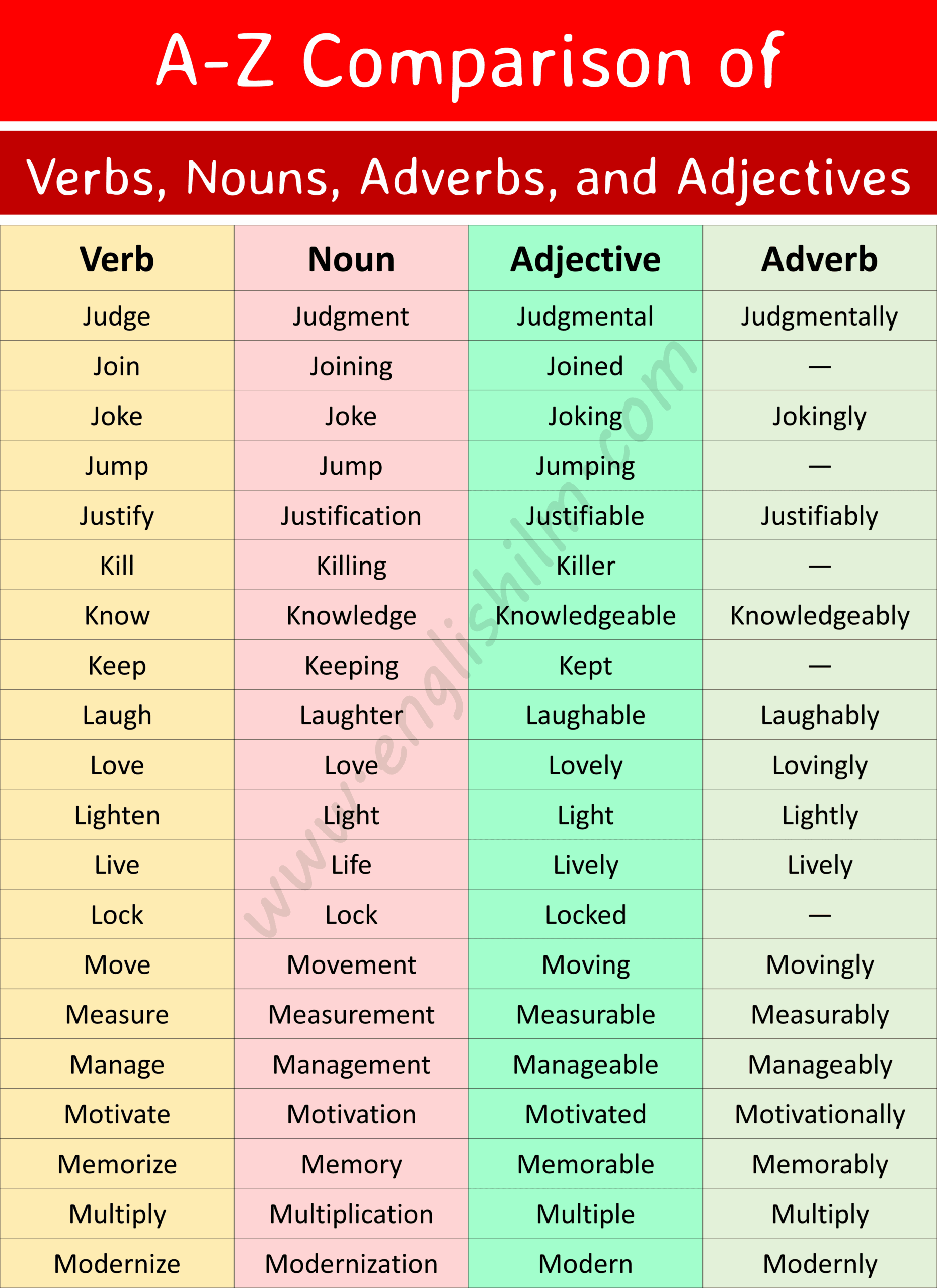Understanding the parts of speech is essential in mastering the English language. Nouns, verbs, adjectives, and adverbs are the building blocks of sentences, and being able to identify them correctly can improve your writing and communication skills.
By knowing how to differentiate between these parts of speech, you can construct sentences that are clear, concise, and effective. In this article, we will discuss how to identify nouns, verbs, adjectives, and adverbs with some helpful tips and examples.
Identifying Noun, Verb, Adjective, and Adverb
Nouns are words that represent a person, place, thing, or idea. They can be singular or plural, and they can also be proper or common. Some examples of nouns include “dog,” “city,” and “love.”
Verbs are action words that show what the subject of the sentence is doing. They can be in different tenses, such as past, present, or future. Examples of verbs include “run,” “eat,” and “sleep.”
Adjectives are words that describe or modify nouns. They provide more information about the noun by answering questions like “what kind?” or “how many?” Examples of adjectives include “happy,” “big,” and “five.”
Adverbs are words that modify verbs, adjectives, or other adverbs. They provide more information about how, when, where, or to what extent something is done. Adverbs often end in “-ly,” such as “quickly,” “happily,” and “slowly.”
One way to identify these parts of speech is to look at the function of the word within the sentence. Nouns are typically the subject of the sentence or the object of a verb. Verbs show the action or state of being in the sentence. Adjectives provide more information about the noun, while adverbs give more details about the verb.
Another tip is to pay attention to the endings of words. Nouns often end in “-tion,” “-ment,” or “-ness.” Verbs can end in various ways depending on the tense, such as “-ed” for past tense or “-ing” for present participle. Adjectives can end in “-ful,” “-ous,” or “-able,” while adverbs often end in “-ly.”
Practice is key to mastering the identification of nouns, verbs, adjectives, and adverbs. Reading and writing regularly can help you become more familiar with how these parts of speech function in sentences. By being able to identify and use them correctly, you can improve your overall communication skills and become a more effective writer.
In conclusion, understanding the roles of nouns, verbs, adjectives, and adverbs is crucial for effective communication in English. By following the tips and examples provided in this article, you can enhance your grammar and writing skills. Keep practicing and applying your knowledge to become more proficient in identifying these parts of speech.
